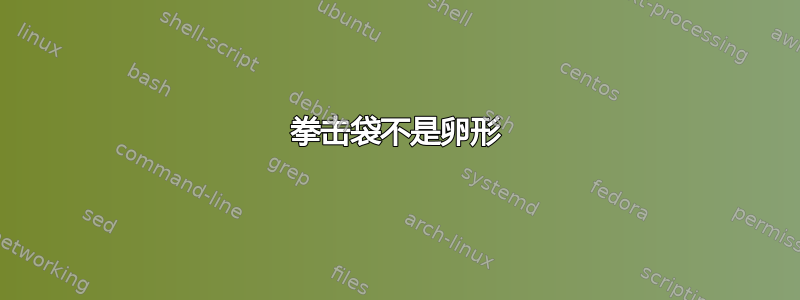
答案1
这可能是一个起点。所有都是用线、圆和弧制作的,但这里的关键是scopes绘制图片的每个部分。在某些情况下,canvas由 3d 库提供。
\documentclass[border=2mm]{standalone}
\usepackage {tikz}
\usepackage {siunitx} % SI units, \SI and \ang commands
\usetikzlibrary{3d} % For "canvas is..." options
\usetikzlibrary{babel} % There are issues with some babel packages
\usetikzlibrary{calc} % Computing some coordinates (adding them, in this example)
% isometric axes
\pgfmathsetmacro\xx{1/sqrt(2)}
\pgfmathsetmacro\xy{1/sqrt(6)}
\pgfmathsetmacro\zy{sqrt(2/3)}
\begin{document}
\begin{tikzpicture}[x={(\xx cm,-\xy cm)},y={(\xx cm,\xy cm)},z={(0 cm,\zy cm)},%
thick,line cap=round,line join=round]
% some dimensions
\def\br{1.5} % bag radius
\def\be{4} % bag elevation
\def\we{17.6} % wall structure elevation
\def\ws{4} % wall structure separation
% Wall & floor
\fill[canvas is yz plane at x=-\ws,gray!20] (-1.2*\ws,0) rectangle (1.2*\ws,\we+1);
\fill[canvas is xy plane at z=0 ,gray!10] (-\ws,-1.2*\ws) rectangle (6,1.2*\ws);
\draw[dashed] (0,0,\be) -- (0,0,0) -- (\ws,0,0) node[midway,sloped, below] {\SI{40}{cm}};
\fill[canvas is xy plane at z=0,gray] (\ws,0) circle (0.25) node[black,xshift=1.25cm] {Boxing Spot};
% Bag
\draw[fill=white] ($(-135:\br)+(0,0,\be+9.6)$) --++ (0,0,-9.6)
{[canvas is xy plane at z=\be] arc (-135:45:\br)} -- ($(45:\br)+(0,0,\be+9.6)$);
\draw[canvas is xy plane at z=\be+9.6,fill=white] (0,0) circle (\br);
\foreach[count=\xi]\i in{1.5,4.2,6.9}
{% 1.5, 1.5+2.7, 1.5+2.7+2.7
\begin{scope}[canvas is xy plane at z=\be+\i]
\draw[orange] (0,0) circle (\br);
\fill[orange] (0,0,\be+\i) circle (1pt);
\coordinate (C\xi) at (225:\br+0.2);
\end{scope}
}
\foreach\i in {0,90,180,270}
{%
\draw[line width=0.5mm] ($(\i:\br)+(0,0,\be+9.6)$) -- (0,0,\we-0.15);
}
\draw[line width=0.5mm] (0,-\br,\be+9.6) --++ (0,0,-0.5);
\draw[line width=0.5mm] (\br, 0,\be+9.6) --++ (0,0,-0.5);
% Wall structure
\begin{scope}[shift={(-\ws,0,\we)},line width=1.5mm]
\draw (0.5*\ws ,0,0) -- (0,0,-0.5*\ws) -- (0,0,-\ws);
\draw (0,-0.5*\ws,0) -- (0,0.5*\ws,0);
\draw (0,0,0) -- (1.25*\ws,0,0);
\draw[canvas is xz plane at y=0,line width=0.75mm] (\ws,-0.15) circle (0.15);
\end{scope}
% Bag dimensions
\begin{scope}[rotate around z=45,canvas is xz plane at y=0]
\draw[blue,<->] (2*\br,\be) --++ (0,1.5) node [midway,right] {\SI{15}{cm}};
\foreach\i in {0,1,2}
{%
\draw[blue,dashed] ( \br,\be+1.5+2.7*\i) --++ (\br,0);
\draw[blue,<->] (2*\br,\be+1.5+2.7*\i) --++ (0,2.7) node [midway,right] {\SI{27}{cm}};
}
\draw[blue,dashed] (\br,\be) --++ (\br,0);
\draw[blue,dashed] (\br,\be+9.6) --++ (\br,0);
\draw[blue] (3*\br,\be+6.9) --++ (0.5,0) --++ (0,-2.7) node [midway,right] {Punch Section} --++ (-0.5,0);
\end{scope}
% section
\begin{scope}[x={(1cm,0cm)},y={(0cm,1cm)},shift={(-8,6)},very thick]
\foreach\i in {1,2,3}
{%
\draw[blue,-latex] (0,0) -- (C\i);
}
\draw[fill=white] (0,0) circle (3);
\draw[blue,<->] (-60:0.5) arc (-60:60:0.5) node [midway,right] {\ang{120}};
\foreach\i in {60,180,300}
{%
\begin{scope}[rotate=\i]
\draw[gray,dashed] (0,0) -- (3,0);
\fill[yellow,opacity=0.8] (1.5,-0.25) rectangle (2.5,0.25);
\end{scope}
}
\draw[blue,latex-] (0,-2) -- (0,-4) node [below] {Neoprene lid (open)};
\draw[blue,latex-] (60:2) -- (0, 4) node [above] {ABS acelerometer};
\draw[blue,<->] (180:2.5) -- (180:3);
\node[blue] at (-3,0) [xshift=-0.25cm,rotate=90,anchor=center] {\SI{4}{cm} to disk edge};
\end{scope}
\end{tikzpicture}
\end{document}
答案2
如果你只是想要更轻松一点,这里也是一个起点,因为你明确想要一个形状不是一个圆柱体。
\documentclass[tikz,border=3.14mm]{standalone}
\usetikzlibrary{decorations.shapes}
\begin{document}
\begin{tikzpicture}
%\draw[help lines] (-1,0) grid (5,12);
\draw [gray,line width=1pt] plot [smooth cycle] coordinates {(0,0) (.5,8) (3.5,8) (4,0)};
\draw[brown,line width=1pt]
(2,6) ellipse (1.9 and 0.5)
(2,4) ellipse (2.1 and 0.5)
(2,2) ellipse (2.2 and 0.5);
\draw[thick,gray,decorate,decoration={shape backgrounds,shape=circle,shape size=4pt,shape sep=3pt}] (2,10) -- (1.5,8.8) (2,10) -- (2.5,8.8) (2,10) --++ (0,1);
\draw[gray,line width=7pt,cap=round]
(2.5,11.3) -- (-1,10.2)
(-2,10.3) -- (0,10)
(1,10.8) -- (0,8.5) --++ (0,-.5);
\end{tikzpicture}
\end{document}





